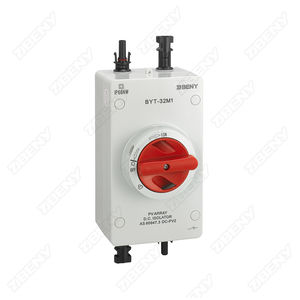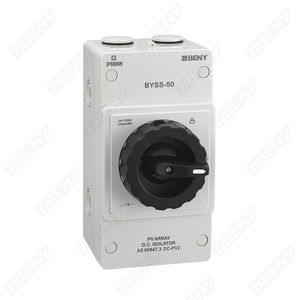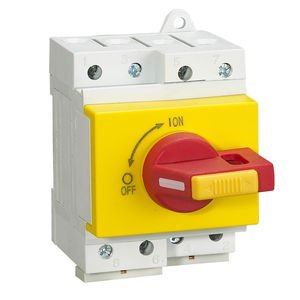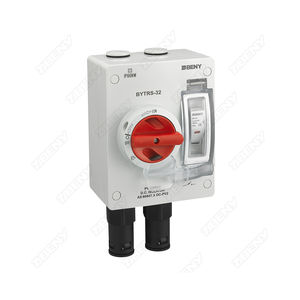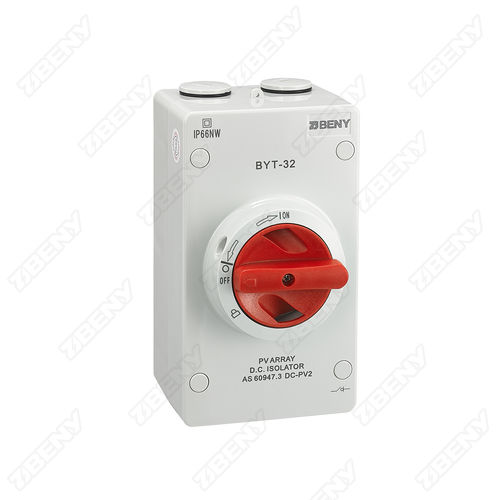
- Electricity - Electronics
- Switch and Relay
- 4-pole disconnect switch
- Zhejiang Benyi Electrical Co.,ltd.
- Company
- Products
- Catalogs
- News & Trends
- Exhibitions
DC isolator switch BYT-32manualnon-fusedfor photovoltaic applications


Add to favorites
Compare this product
Characteristics
- Type
- manual
- Other characteristics
- DC, non-fused, for photovoltaic applications, 4-pole, 2-pole
- Primary current
Max.: 32 A
Min.: 16 A
- VDC
500 V, 600 V, 800 V, 1,000 V, 1,200 V
Description
The first DC isolator to AS 60947.3:2018 DC-PV2
DC isolating switches must now have a valid Certificate of Conformity confirming the product complies with AS 60947.3:2018. The brand and all relevant models must be registered to the responsible supplier in the EESS national database and be marked with the Regulatory Compliance Mark (RCM).
ZJBENY DC isolator switch BYT-32 is developed for Australia solar market and popular in worldwide, It’s the first DC isolator complies with the newest AS 60947.3:2018 standard, has been classified as Level 3 equipment on the ERAC website, and with Regulatory Compliance Mark.
1200V True DC for solar PV application
BYT-32 is the 1200V 32A max true DC isolator switch with IP66/67 enclosure for PV application, installed between the solar arrays and solar inverter, for isolation the PV array during system installation or any maintenance. The switch must be rated for system voltage (1.15 x string open circuit voltage Voc) and current (1.25 x string short circuit current Isc)
Thanks to the UV resistance enclosure at IP66 protection degree and flame retardant material, the isolator BYH-32 is reliable and long working life, keeps the solar system safety.
Highlight:
* The first DC isolator to DC-PV2
* True IP66/67 DC isolator for solar PV application
* UV resistance and flame retardant technology
* AS 60947.3:2018 standard , AS/NZS IEC 60947.1:2015
* With anti-counterfeit label for original ZJBENY
* 5 years warranty and product insurance
Other Zhejiang Benyi Electrical Co.,ltd. products
DC Isolator Switch
Related Searches
- Surge protector
- DIN rail surge protector
- Circuit breaker
- Isolator switch
- Type 2 surge protector
- Low-voltage surge protector
- Type 1 surge protector
- Multipole surge protector
- Remote signaling surge protector
- Multipole disconnect switch
- 3-pole disconnect switch
- Current circuit breaker
- 4-pole isolator switch
- DC surge protector
- MCB circuit breaker
- Low-voltage isolator switch
- Thermal-magnetic circuit breaker
- Overload circuit breaker
- Manual reset circuit breaker
- AC disconnector
*Prices are pre-tax. They exclude delivery charges and customs duties and do not include additional charges for installation or activation options. Prices are indicative only and may vary by country, with changes to the cost of raw materials and exchange rates.







